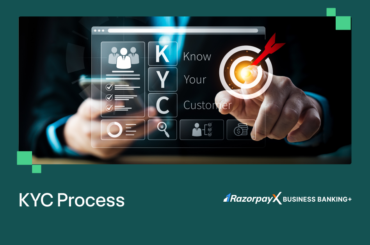A bank transfer is essentially one of the most fundamental forms of money movement for most businesses. Modes like IMPS, NEFT, and RTGS, are very popular and businesses are quite comfortable using them.
But, for any payout to happen, you would need the beneficiary’s account details. What would you do when you don’t have the necessary details?
Sure, you’ll reach out to your beneficiary, add them onto your bank portal, wait a cooling period, and then make a bank transfer. This means, your beneficiary has to wait for 5 to 7 business days to get their payout.
That brings us back to the question. Is it actually possible to automate a bank transfer without adding a beneficiary with account details?
Table of Contents
Bank transfer without account details – when does that happen?
It’s a no brainer that without the beneficiary’s bank account details, a payout cannot be made. But, there are many cases where businesses don’t need a KYC process to onboard their customers.
Businesses may have a record of their customers’ basic information like their name, phone number, and email address, but there might not be any use for their account details during their onboarding.
Let’s look into some real business cases to understand more.
E-commerce: making refunds to CoD customers
When customers create their profile on an e-commerce site, it isn’t always necessary that they set up their payment mode or provide their bank account information. Although most online businesses have digital payments set up, over 60% of online purchases that happen in India are fuelled by Cash on Delivery.
It’s pretty straightforward to make a refund if the customer paid via card or a bank transfer, to begin with. But the real problem arises when they don’t.
Here’s what happens when a customer returns the product and asks for a refund.
A customer care executive may reach out to the customer via a phone call or an email to gather their bank account details. With no ways of verifying the validity of the account (provided the customer is reached without any problems), the details are passed to the team responsible to handle payouts.
If there is an error with the details provided by the customer, the process repeats itself.
The number of times this process can go on, along with the multiple touchpoints that are made to accomplish this task, creates complexity.
Suggested reading: How E-commerce Companies can automate CoD Refunds
Rental businesses: bank transfer to refund security deposit
With so many people all over the country relocating for their jobs, renting has become the most feasible solution for their furniture, vehicles, fitness equipment, and more.
When a customer sets up their profile on a rental business site, they usually pay an amount upfront as a security deposit for the items they would rent. The monthly rental is mostly a subscription. But when they want to end their rental subscription, the business has to refund the security deposit considering the condition of the item.
If the amount to be refunded is less than the initial deposit, or if the customer wants the refund made to a different account, the problem persists. The business again has to collect the bank account information from the customer, verify it, get the finance team involved, and then make a payout.
Again, multiple iterations and multiple touchpoints.
Online gaming: bank transfer to disburse winnings
Play-to-win is a segment of online real money gaming where customers can collect their winnings after winning a game against an opponent. Games like RummyCulture, MPL, Dream11 are very popular all over the country.
Customers are so fond of play-to-win games because they provide instant gratification, which means, “collect your reward in 5 to 7 business days” does not work well at all.
While gaming companies have to make sure their customers receive the reward as soon as possible, they might not have the customers’ account information. This is when they have to come back to square one.
And if they do, they have to ensure the payouts are made during the banking hours.
Also read: Decoded – Money Movement for Online Gaming Companies
Payout Links: automating disbursals without account details
Payout Links is the easiest and fastest way to disburse funds into your customers’ preferred bank account via IMPS, UPI, NEFT, and RTGS. Payout Links helps automate the entire process of making a refund to your customers within minutes.
All you have to do is create a Payout Link on your RazorpayX Dashboard by entering your customer details along with the amount that needs to be refunded.
Here’s what happens next.
- Your customer opens the Payout Link and verifies themselves via OTP
- They enter their preferred account which can be a bank account or their UPI ID
- On successful entry of their account details, they receive their refund almost immediately
- Your customer is notified if there is an error with the account details they have provided, so they can re-enter the details or try with a different account
Yes, your customer still has to provide their bank account details in order to process the bank transfer. But, the number of iterations and touchpoints are drastically reduced, making the money disbursal very straightforward.
Your customers don’t have to wait for 5 to 7 business days to get their refund anymore!





